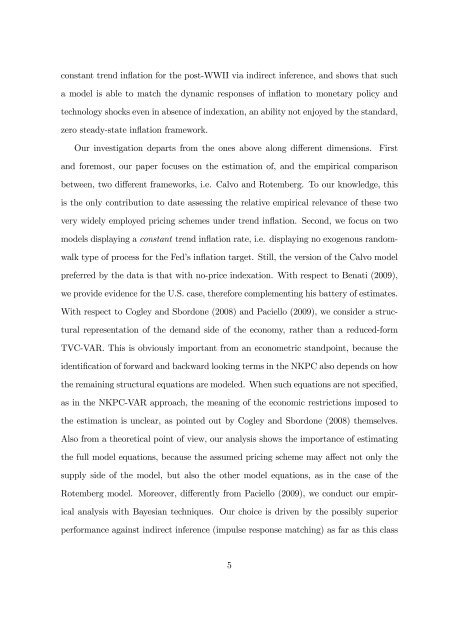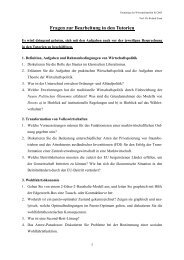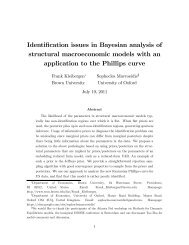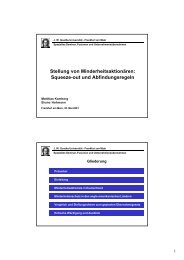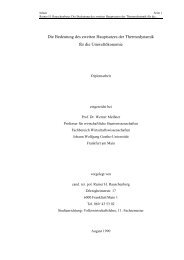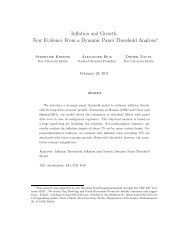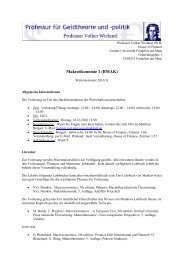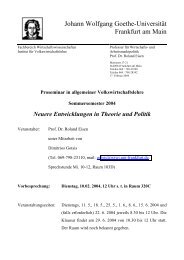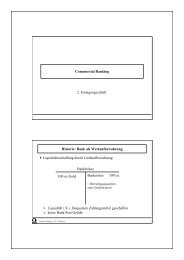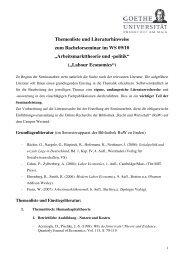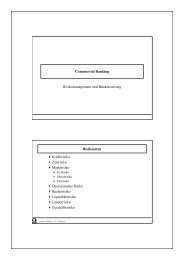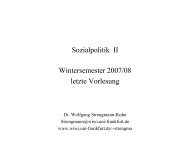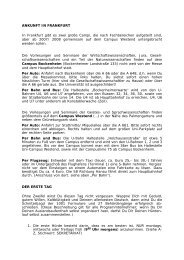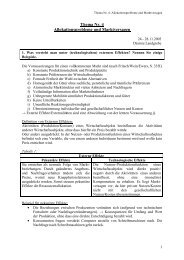Calvo vs. Rotemberg in a Trend Inflation World - Wiwi Uni-Frankfurt
Calvo vs. Rotemberg in a Trend Inflation World - Wiwi Uni-Frankfurt
Calvo vs. Rotemberg in a Trend Inflation World - Wiwi Uni-Frankfurt
You also want an ePaper? Increase the reach of your titles
YUMPU automatically turns print PDFs into web optimized ePapers that Google loves.
constant trend <strong>in</strong>‡ation for the post-WWII via <strong>in</strong>direct <strong>in</strong>ference, and shows that such<br />
a model is able to match the dynamic responses of <strong>in</strong>‡ation to monetary policy and<br />
technology shocks even <strong>in</strong> absence of <strong>in</strong>dexation, an ability not enjoyed by the standard,<br />
zero steady-state <strong>in</strong>‡ation framework.<br />
Our <strong>in</strong>vestigation departs from the ones above along di¤erent dimensions. First<br />
and foremost, our paper focuses on the estimation of, and the empirical comparison<br />
between, two di¤erent frameworks, i.e. <strong>Calvo</strong> and <strong>Rotemberg</strong>. To our knowledge, this<br />
is the only contribution to date assess<strong>in</strong>g the relative empirical relevance of these two<br />
very widely employed pric<strong>in</strong>g schemes under trend <strong>in</strong>‡ation. Second, we focus on two<br />
models display<strong>in</strong>g a constant trend <strong>in</strong>‡ation rate, i.e. display<strong>in</strong>g no exogenous random-<br />
walk type of process for the Fed’s <strong>in</strong>‡ation target. Still, the version of the <strong>Calvo</strong> model<br />
preferred by the data is that with no-price <strong>in</strong>dexation. With respect to Benati (2009),<br />
we provide evidence for the U.S. case, therefore complement<strong>in</strong>g his battery of estimates.<br />
With respect to Cogley and Sbordone (2008) and Paciello (2009), we consider a struc-<br />
tural representation of the demand side of the economy, rather than a reduced-form<br />
TVC-VAR. This is obviously important from an econometric standpo<strong>in</strong>t, because the<br />
identi…cation of forward and backward look<strong>in</strong>g terms <strong>in</strong> the NKPC also depends on how<br />
the rema<strong>in</strong><strong>in</strong>g structural equations are modeled. When such equations are not speci…ed,<br />
as <strong>in</strong> the NKPC-VAR approach, the mean<strong>in</strong>g of the economic restrictions imposed to<br />
the estimation is unclear, as po<strong>in</strong>ted out by Cogley and Sbordone (2008) themselves.<br />
Also from a theoretical po<strong>in</strong>t of view, our analysis shows the importance of estimat<strong>in</strong>g<br />
the full model equations, because the assumed pric<strong>in</strong>g scheme may a¤ect not only the<br />
supply side of the model, but also the other model equations, as <strong>in</strong> the case of the<br />
<strong>Rotemberg</strong> model. Moreover, di¤erently from Paciello (2009), we conduct our empir-<br />
ical analysis with Bayesian techniques. Our choice is driven by the possibly superior<br />
performance aga<strong>in</strong>st <strong>in</strong>direct <strong>in</strong>ference (impulse response match<strong>in</strong>g) as far as this class<br />
5


